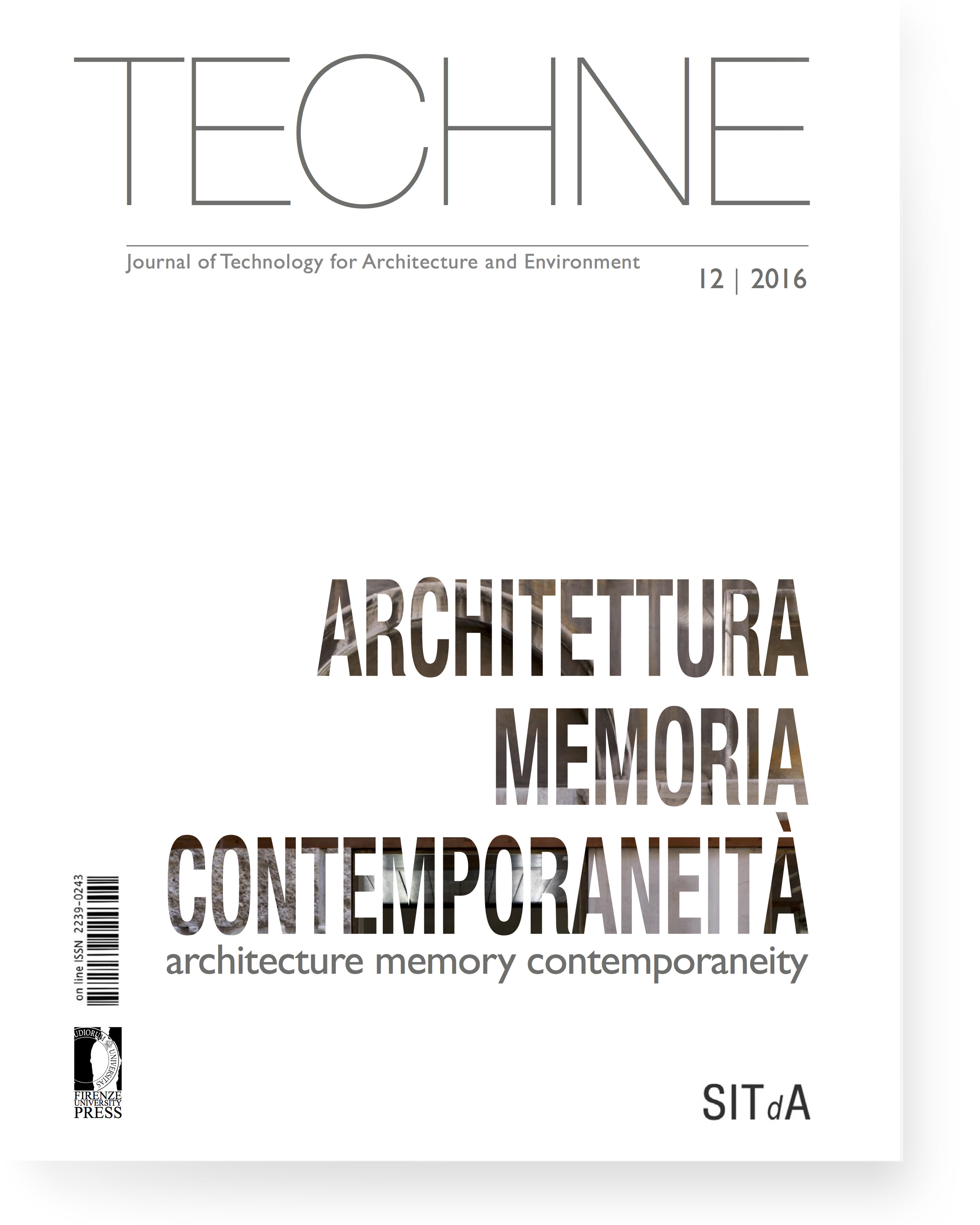Essays and Viewpoint
Published 2016-11-28
Keywords
- Guidelines,
- Energy efficiency,
- Cultural heritage,
- Compatible reuse
How to Cite
Battisti, A. (2016). Guidelines for energy efficiency in the cultural heritage. TECHNE - Journal of Technology for Architecture and Environment, (12), 65–73. https://doi.org/10.13128/Techne-19336
Abstract
The purpose of this paper is to provide an account of my experience between 2013 and 2015 as a member of the Ministry of Cultural Heritage and Activities (MiBACT) working table formed to develop “Guidelines for improving energy efficiency in the cultural heritage of architecture and of urban and historical centres and cores.” These guidelines currently make directives and solutions available in order to attempt to solve the problem of how to reconcile requirements of comfort and energy efficiency with the need to preserve structures whose original intended use was quite different; in other words, this is the problem of how to safeguard and capitalize on the historical and cultural characteristics typical of ancient settlements, while at the same time transforming them to be suited to the needs of an increasingly evolved society.Downloads
Download data is not yet available.






